Forums
- Forums
- Duggy's Reference Hangar
- USAAF / USN Library
- DAUNTLESS ORIGINS the BT-1
DAUNTLESS ORIGINS the BT-1
Post a reply
- Go to Previous topic
- Go to Next topic
- Go to Welcome
- Go to Introduce Yourself
- Go to General Discussion
- Go to Screenshots, Images and Videos
- Go to Off topic
- Go to Works in Progress
- Go to Skinning Tips / Tutorials
- Go to Skin Requests
- Go to IJAAF Library
- Go to Luftwaffe Library
- Go to RAF Library
- Go to USAAF / USN Library
- Go to Misc Library
- Go to The Ops Room
- Go to Made in Germany
- Go to Campaigns and Missions
- Go to Works in Progress
- Go to Juri's Air-Raid Shelter
- Go to Campaigns and Missions
- Go to Works in Progress
- Go to Skinpacks
- Go to External Projects Discussion
- Go to Books & Resources
-
12 years ago
 Main AdminText by Greg Goebel. Thanks
Main AdminText by Greg Goebel. Thanks
Northrop Corporation had been founded in El Segundo, California, in 1932 by John Northrop, who had been an employee of Douglas Aircraft. It wasn't exactly a parting of the ways between Northrop and Douglas, since Douglas provided him with backing and retained ownership over the Northrop firm. The relationship between Northrop and Douglas was good for a time, with Northrop making a splash with advanced aircraft designs, such as the fast Gamma mailplane.
In 1934, the US Navy Bureau of Aeronautics (BuAer) issued a request for a dive bomber, with Northrop / Douglas senior engineer Edward H. Heinemann submitting a design that was accepted over the competition, the Navy ordering a single prototype under the designation of "XBT-1" -- the "B" for standing for "bomber" and the "T" (somehow) for "Northrop". Initial flight of the prototype was on 19 August 1935, with the aircraft powered by a Pratt & Whitney (P&W) R-1535-66 Twin Wasp Junior two-row radial engine, providing 520 kW (700 HP) and driving a two-bladed propeller. The XBT-1 was refitted with an R-1535-94 Twin Wasp with 615 kW (825 HP) in December 1935.
BELOW XBT-1 1935

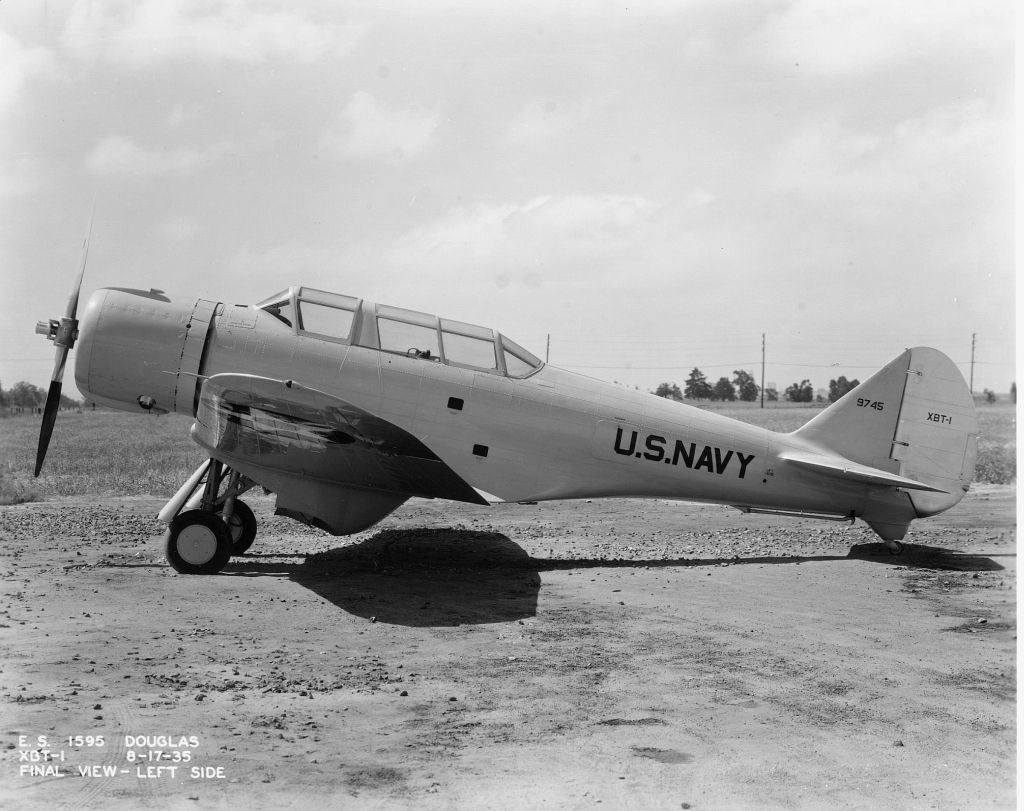



Below XBT-1-1936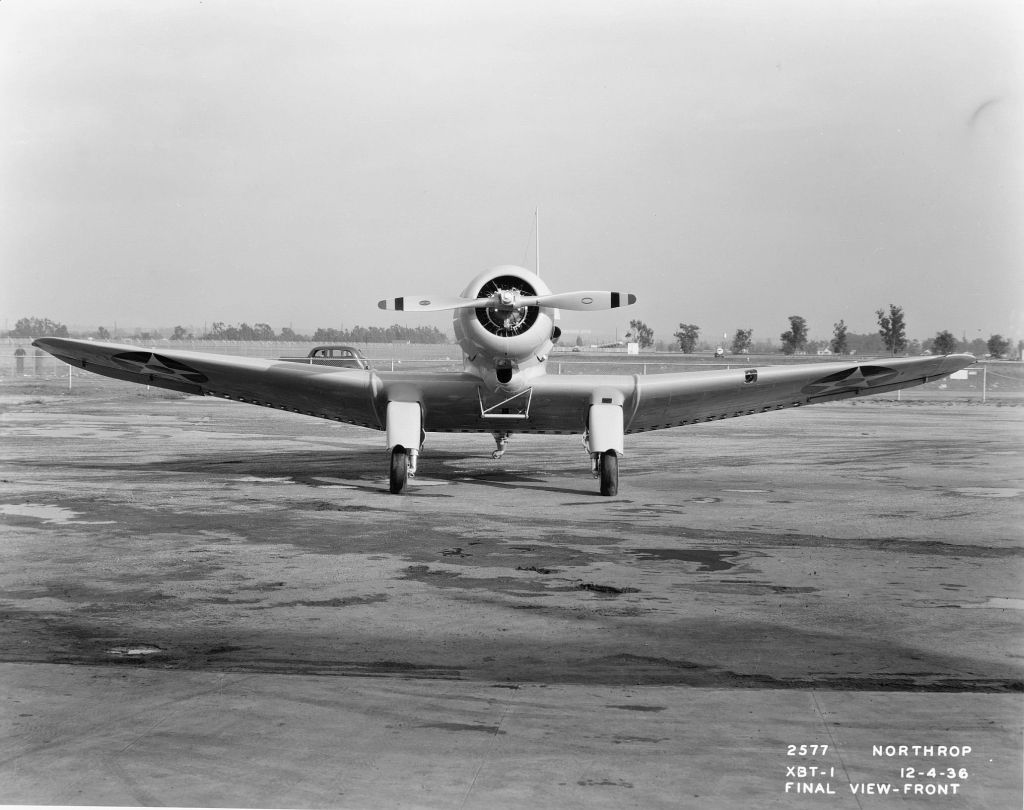




In September 1936, the Navy ordered 54 production "BT-1s", with 53 actually delivered. The BT-1 featured tailwheel landing gear, with semi-retractable main gear that hinged backwards into fairings under the wings, and a fixed tailwheel. The original design had featured "split flaps" for dive braking, with the flaps extending above and below the wing. These flaps were modified with an array of holes in the production BT-1s, and the "Swiss cheese" flaps would remain a distinctive feature of the subsequent aircraft line. The BT-1 also differed from the XBT-1 in having a larger, rounded tailfin, and a modified cowling.



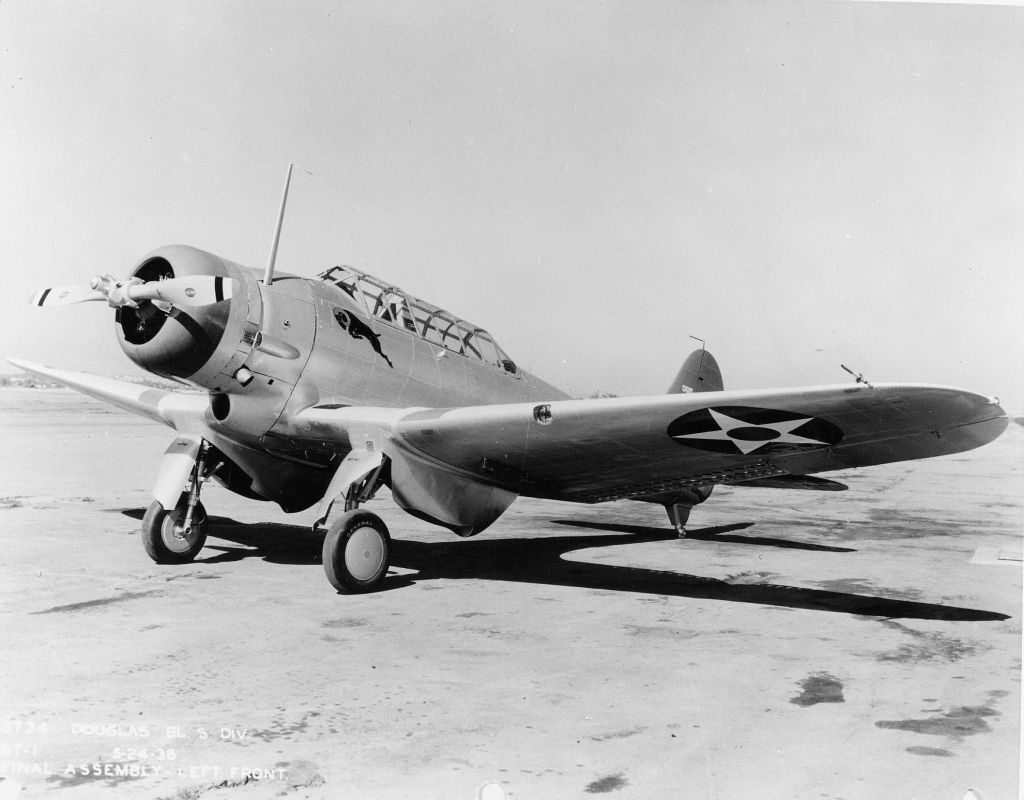









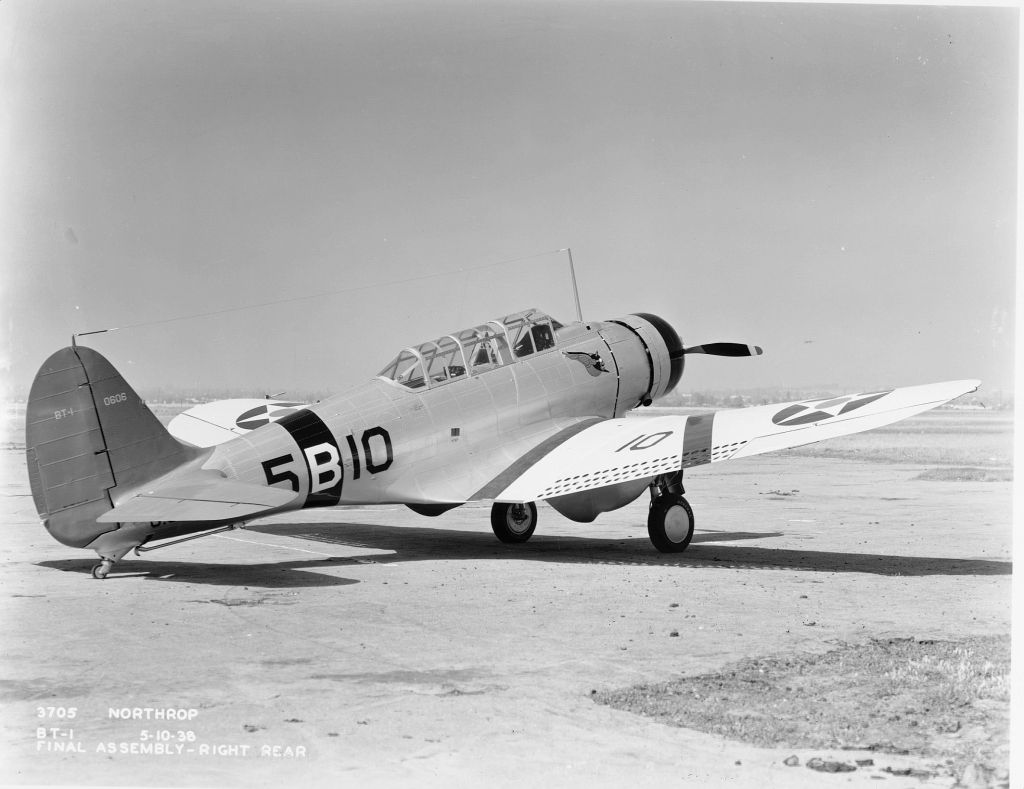

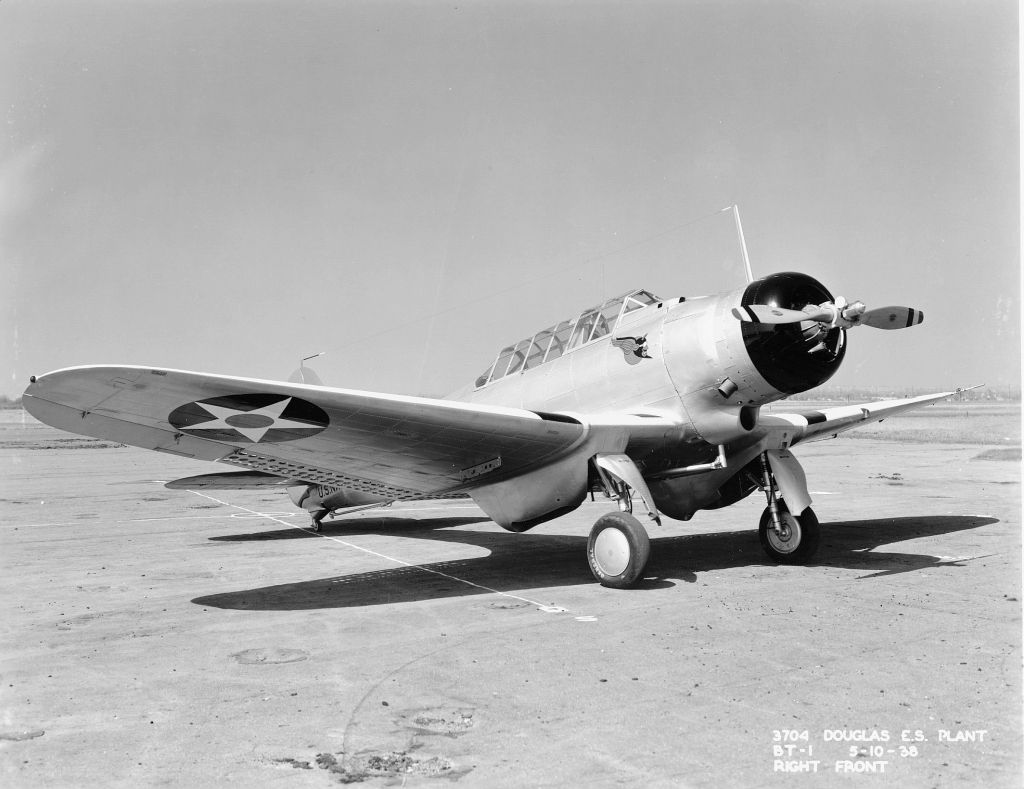
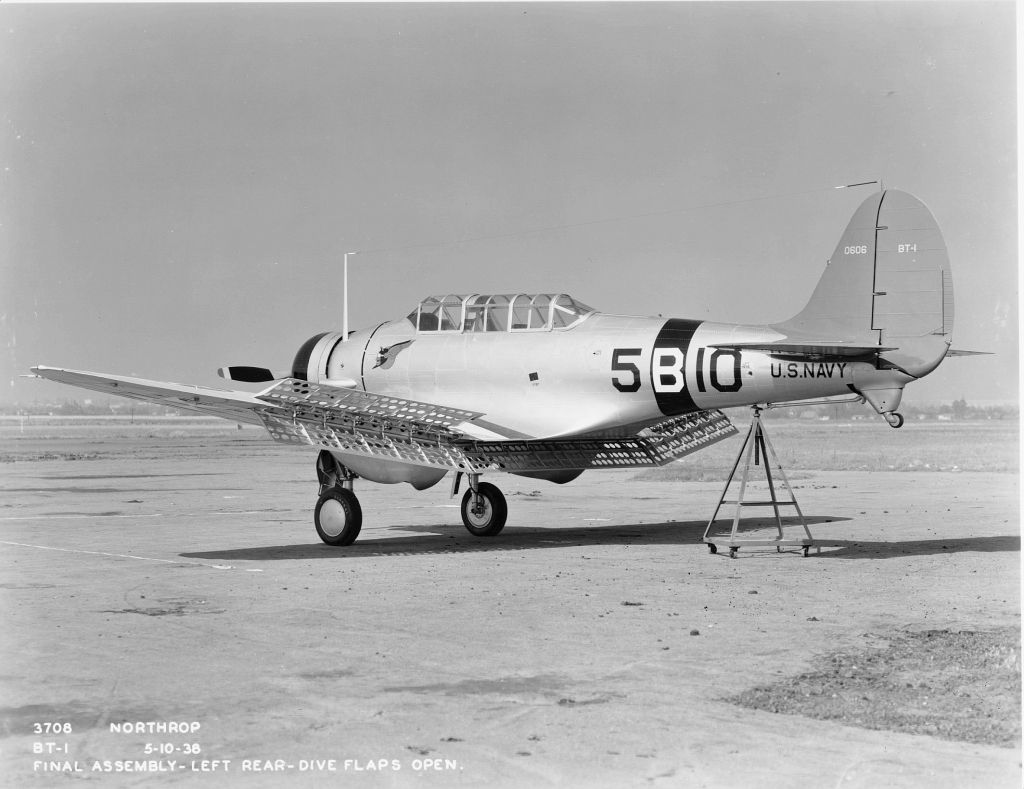


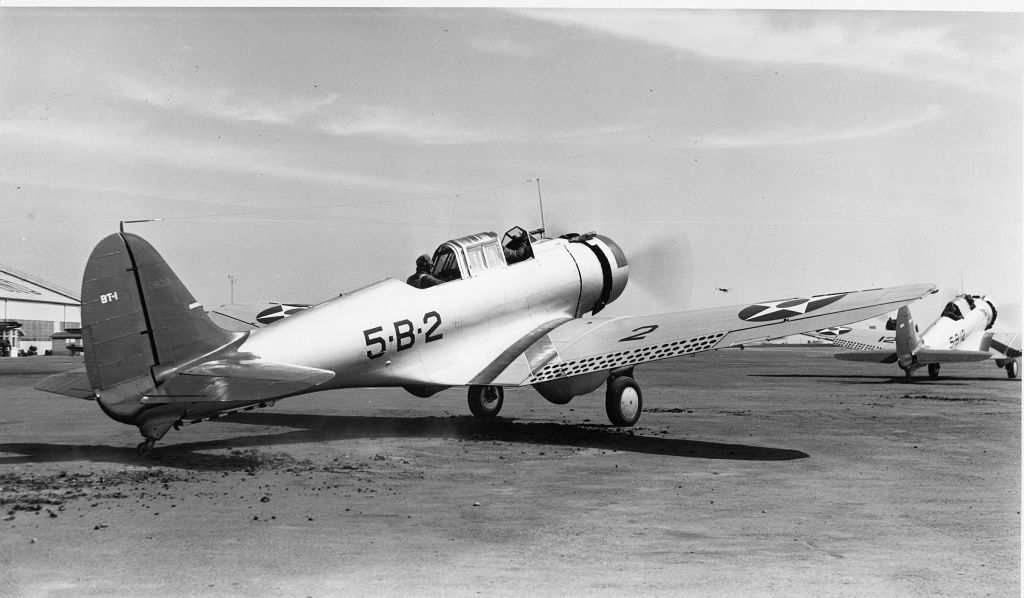



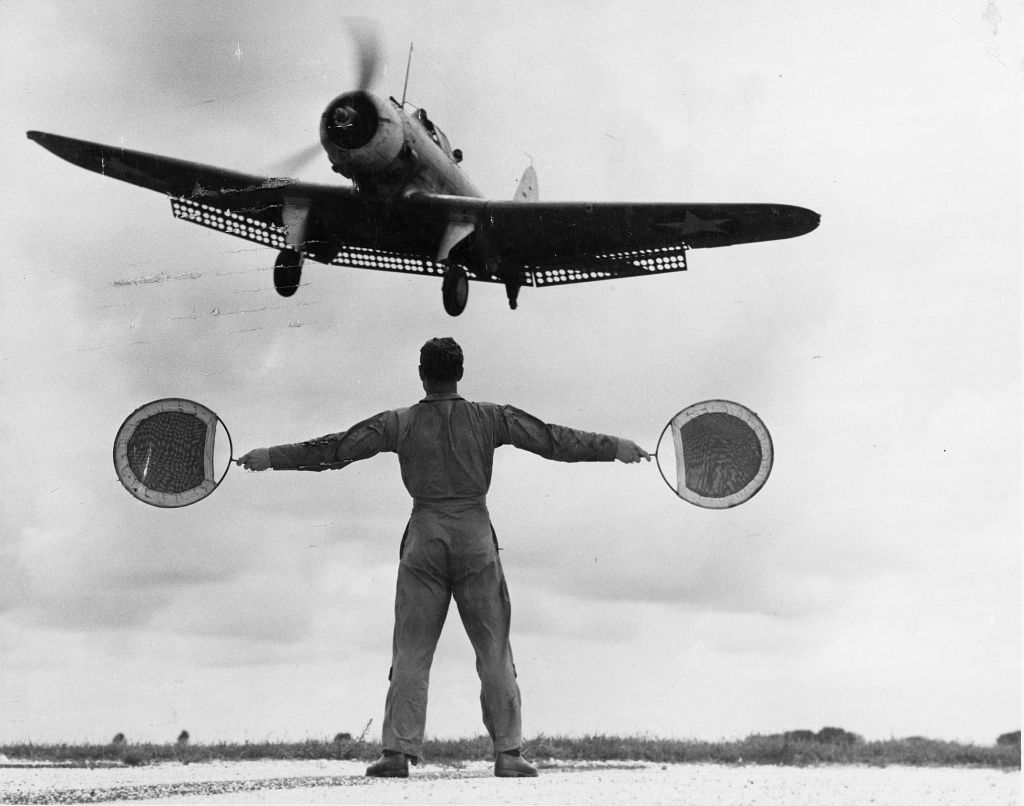



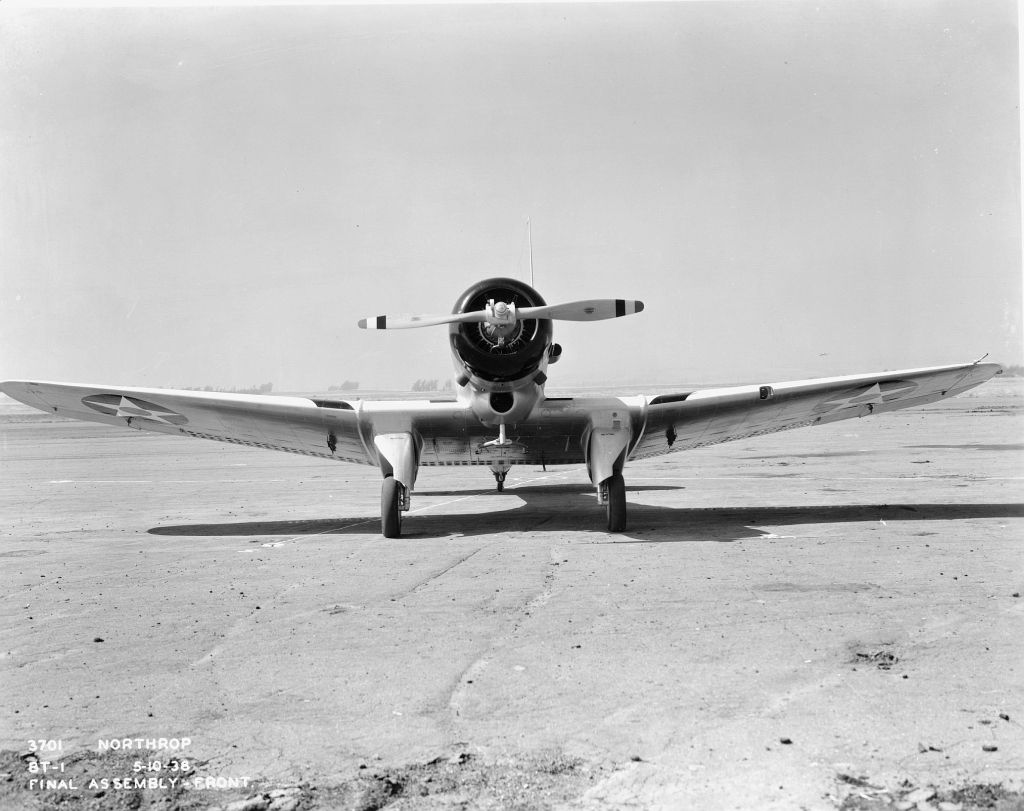

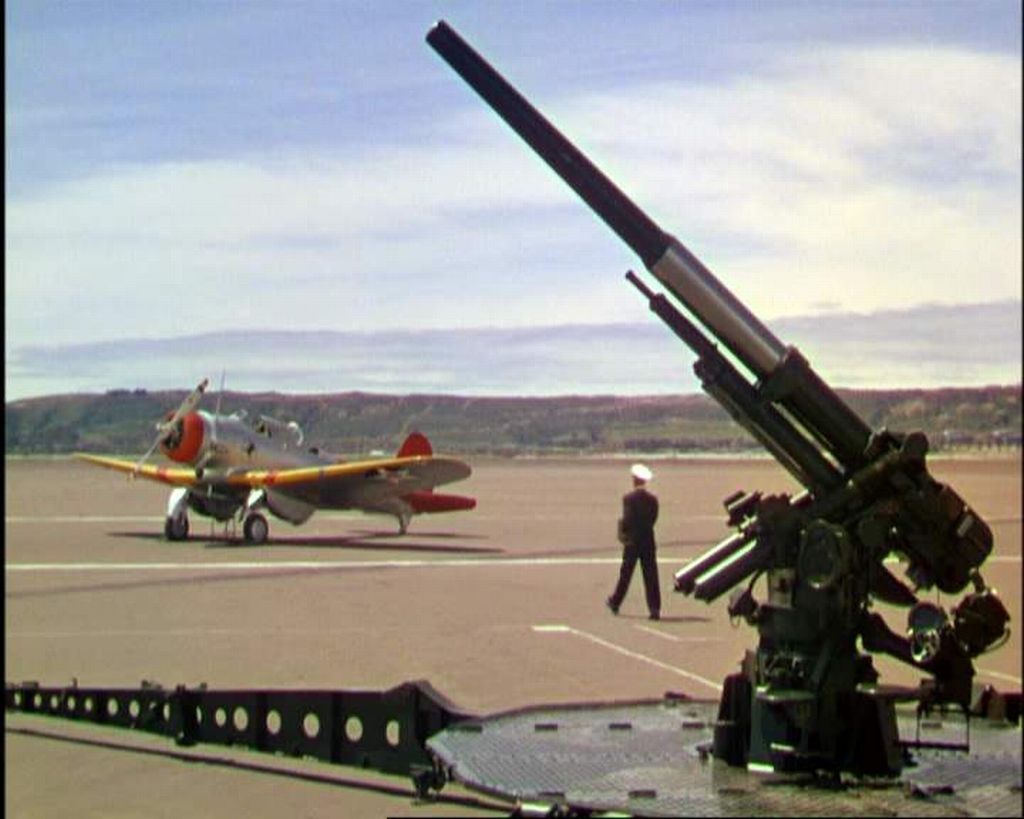
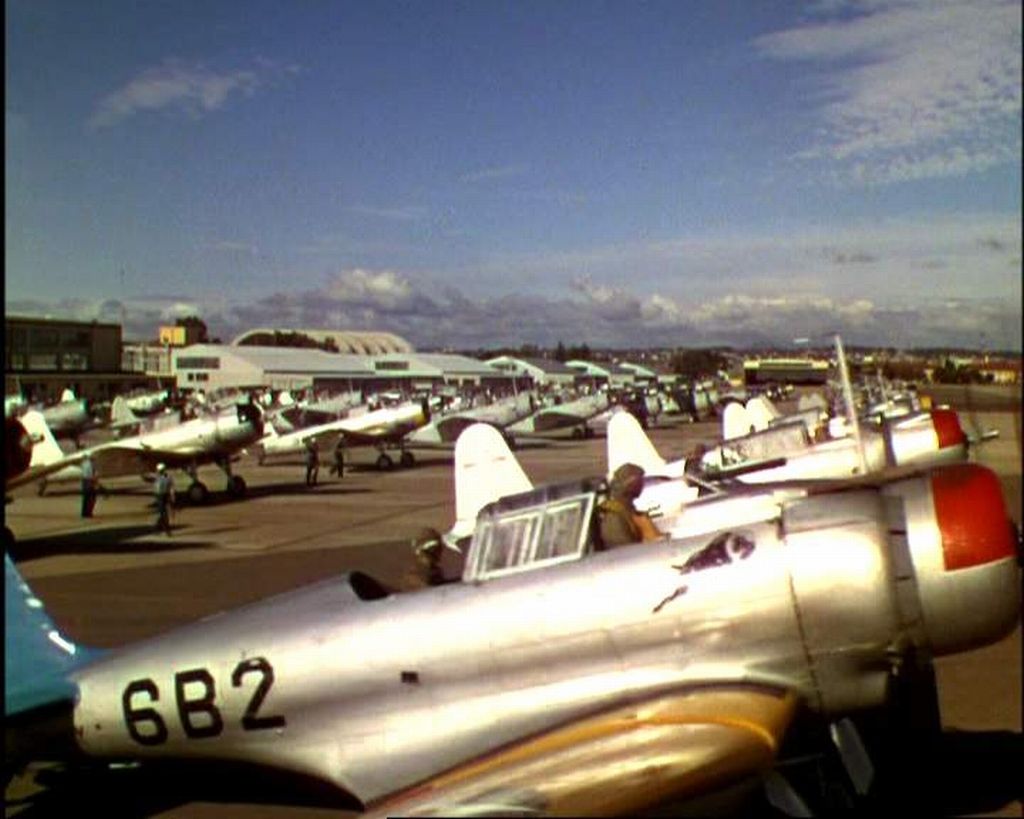

The BT-1 proved highly unsatisfactory in service, being underpowered and suffering from nasty handling characteristics, but the Navy didn't give up on Northrop. The 54th BT-1 was actually completed as the "XBT-2", with a more powerful engine and other changes. In its initial configuration, the XBT-2 performed its first flight on 25 April 1938, only to still prove disappointing. The aircraft was flown to Langley, Virginia, to be tested in a big wind tunnel operated by the US National Advisory Committee on Aeronautics (NACA, the main predecessor of the modern National Aviation & Space Administration, NASA). After the tests, the aircraft went through an extensive redesign.
Below XBT-2




By this time, Northrop had quit the company to form another, of course being named "Northrop Aircraft" once more, with the "old" Northrop company reverting to Douglas control as the "El Segundo" division. The drastically modified XBT-2 prototype, which had only a general resemblance to the old BT-1, was accepted by the US Navy in 1939, with a production order placed in February of that year for 144 aircraft, to be designated "SBD-1" -- the "SB" standing for "scout bomber" and the "D" of course for "Douglas". Initial service deliveries of the "Dauntless", as it had been named, were in late 1940.
Regards Duggy
-
12 years ago
 Level 1Here is a nice one from the Life MAgazine Archive
Level 1Here is a nice one from the Life MAgazine Archive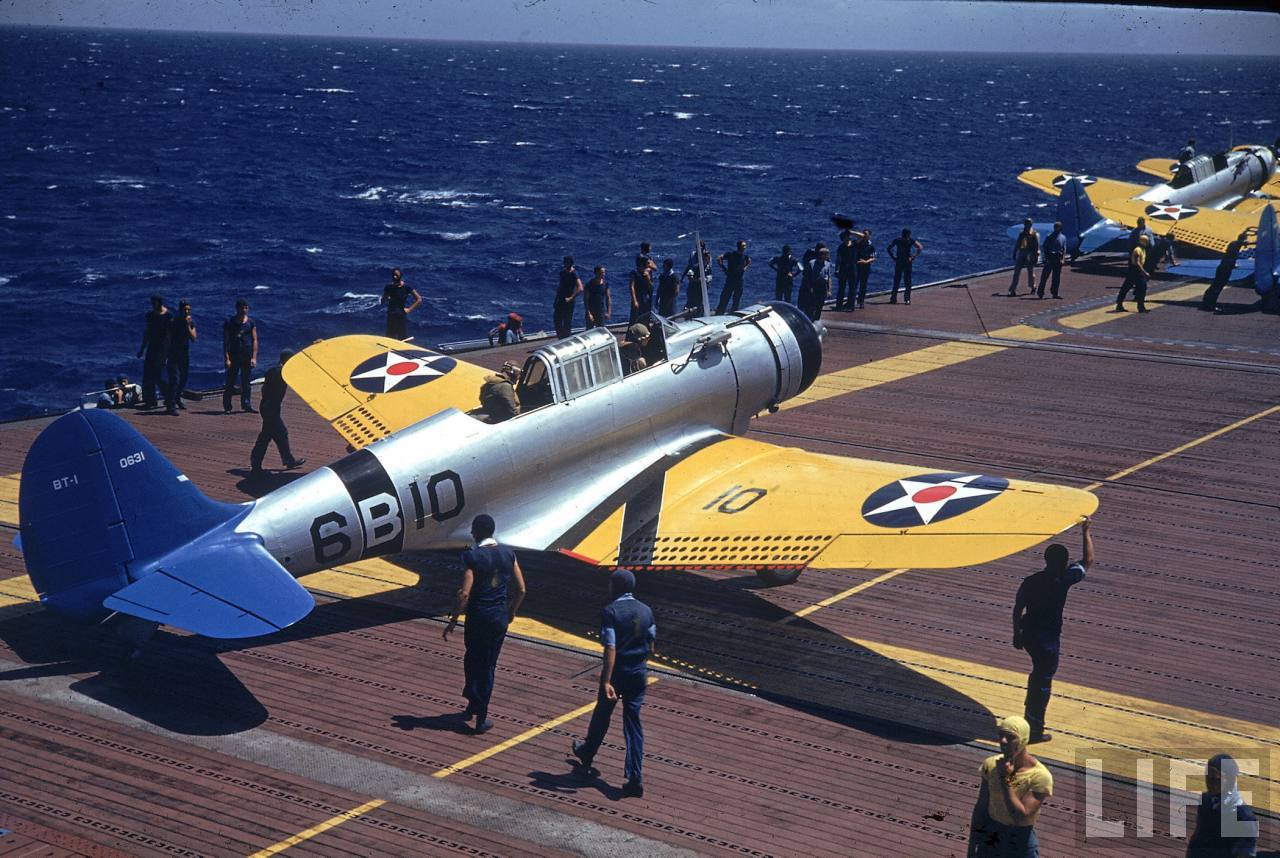
-
 Level 7Thanks for another great article, Duggy
Level 7Thanks for another great article, Duggy
An interesting concept for the wing construct on those early versions. The leading edge continuing seemingly independently right beneath the fuselage from one wing to the other.
Look at that blue paint edge curving and sloping between the tail and elevator in that last image. That's style.
-
 Admin
Admin
Emel
An interesting concept for the wing construct on those early versions. The leading edge continuing seemingly independently right beneath the fuselage from one wing to the other.
I wonder if it had anything to do with streamlining? A wing intersecting a round fuselage at anything but a 90 degree angle actually causes a lot of drag.
I've always thought the rakishly forward-swept canopy frames were soooo cool.
Post a reply
- Go to Previous topic
- Go to Next topic
- Go to Welcome
- Go to Introduce Yourself
- Go to General Discussion
- Go to Screenshots, Images and Videos
- Go to Off topic
- Go to Works in Progress
- Go to Skinning Tips / Tutorials
- Go to Skin Requests
- Go to IJAAF Library
- Go to Luftwaffe Library
- Go to RAF Library
- Go to USAAF / USN Library
- Go to Misc Library
- Go to The Ops Room
- Go to Made in Germany
- Go to Campaigns and Missions
- Go to Works in Progress
- Go to Juri's Air-Raid Shelter
- Go to Campaigns and Missions
- Go to Works in Progress
- Go to Skinpacks
- Go to External Projects Discussion
- Go to Books & Resources
